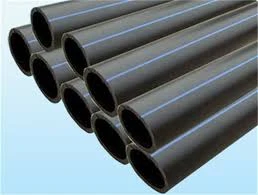Oct . 19, 2024 10:08 Back to list
HDPE Duct Pipe Applications and Benefits for Reliable Infrastructure Solutions
Understanding HDPE Duct Pipe Properties, Applications, and Benefits
High-Density Polyethylene (HDPE) duct pipe is a versatile piping solution widely used in various sectors, including telecommunications, electrical, and underground utilities. Its unique properties make it an ideal choice for many applications where durability and reliability are crucial.
What is HDPE?
High-Density Polyethylene is a thermoplastic polymer made from petroleum. Known for its high strength-to-density ratio, HDPE is resistant to impact, chemicals, and moisture. These properties make HDPE an excellent material for duct pipes used in various environmental conditions.
Properties of HDPE Duct Pipe
1. Durability HDPE duct pipes are known for their ability to withstand harsh weather conditions and resist degradation caused by chemicals, making them suitable for a wide range of applications.
2. Flexibility Unlike traditional rigid pipes, HDPE duct pipes are flexible, allowing for easy installation in tight spaces and around obstacles. This flexibility can significantly reduce installation time and costs.
3. Lightweight HDPE ducts are much lighter than alternatives such as metal or concrete pipes. This characteristic makes transportation and handling easier, contributing to a more efficient installation process.
4. Corrosion Resistance HDPE is inherently resistant to corrosion, which is a significant advantage in damp environments or where chemical exposure is expected. This quality helps extend the lifespan of the pipes.
5. Smooth Interior Surface The smooth bore of HDPE duct pipes minimizes friction and allows for optimal flow rates. This aspect is particularly advantageous for telecommunications and electrical conduits where signal integrity is paramount.
hdpe duct pipe

6. Environmental Considerations HDPE duct pipes are recyclable, contributing to a more sustainable approach to utility management. Their longevity also results in lower maintenance costs over time, making them an environmentally friendly option.
Applications of HDPE Duct Pipe
HDPE duct pipes facilitate numerous applications, making them an essential component in modern infrastructure. Common uses include
- Telecommunications HDPE ducts are frequently used to house fiber optic cables, ensuring protection against impact and environmental damage while maintaining signal quality.
- Electrical Conduit Electrical utilities utilize HDPE duct pipes to protect wiring from external elements, ensuring safety and longevity in installations.
- Water and Wastewater Systems Due to their durability and flexibility, HDPE pipes are often used in water distribution and drainage systems, helping minimize leaks and environmental contamination.
- Cable Management HDPE ducts provide an effective solution for organizing and protecting electrical and telecommunications cables, ensuring efficient management and accessibility.
Conclusion
In conclusion, HDPE duct pipes represent a robust, flexible, and environmentally friendly solution for modern construction and utility needs. With its impressive range of properties—durability, lightweight, resistance to corrosion, and recyclability—HDPE is an ideal choice for various applications, particularly in telecommunications, electrical conduits, and water management systems. As infrastructure demands continue to grow, the role of HDPE duct pipes will likely expand, providing reliable and efficient solutions for the challenges of tomorrow.
-
Premium PVC Soft Sheets: Clear, Flexible & Durable
NewsAug.12,2025
-
Premium PVC Round Rods: Durable, Chemical Resistant, Easy to Machine
NewsAug.11,2025
-
PP U-channel: Chemical-Resistant, Lightweight & Durable
NewsAug.10,2025
-
Transparent PVC Pipe: Clear Flexible Tubing for Fluids
NewsAug.09,2025
-
Durable PP Rigid Sheet: Versatile & High-Quality Plastic Panels
NewsAug.08,2025
-
Premium Glossy PP Rigid Sheet – Durable & Versatile
NewsAug.07,2025

